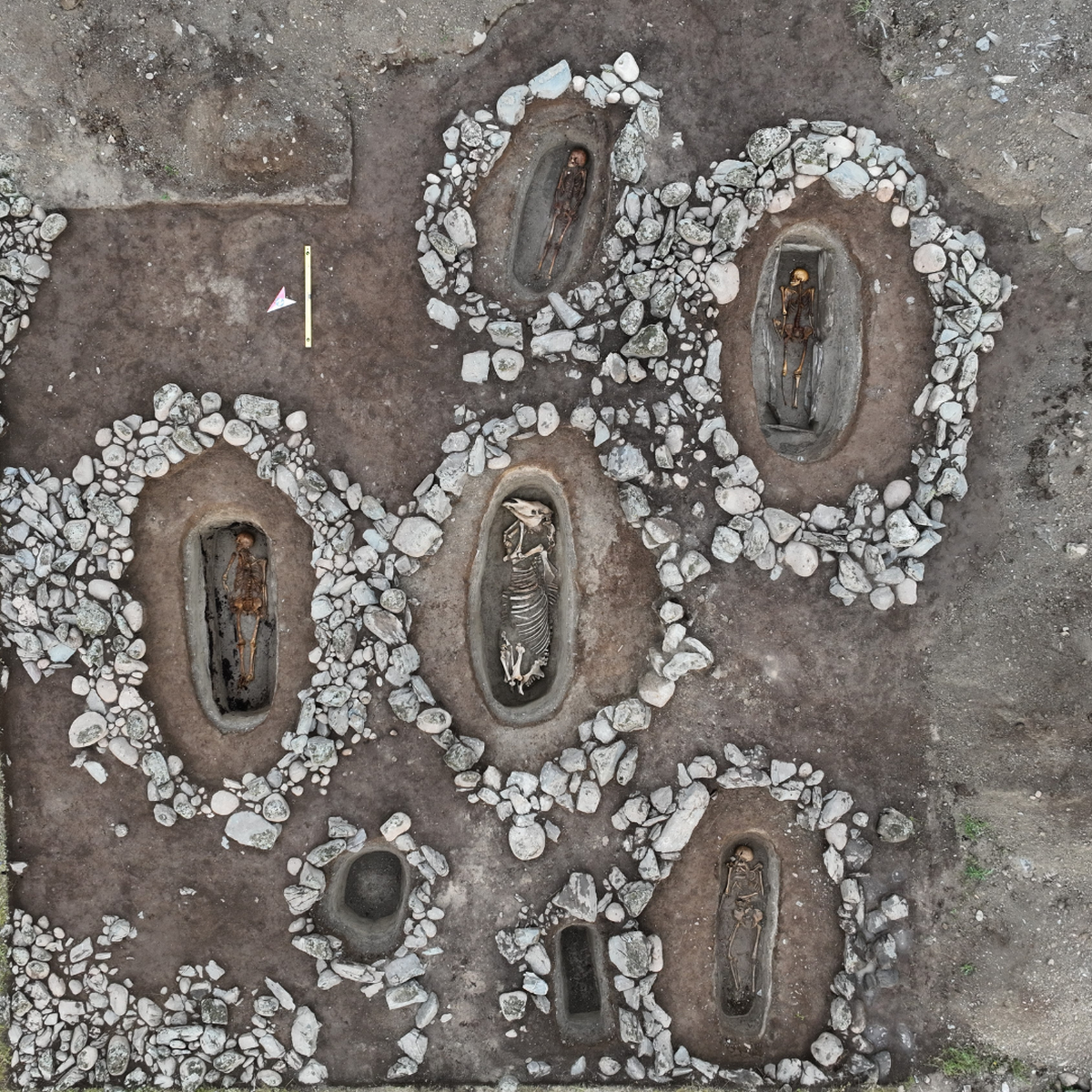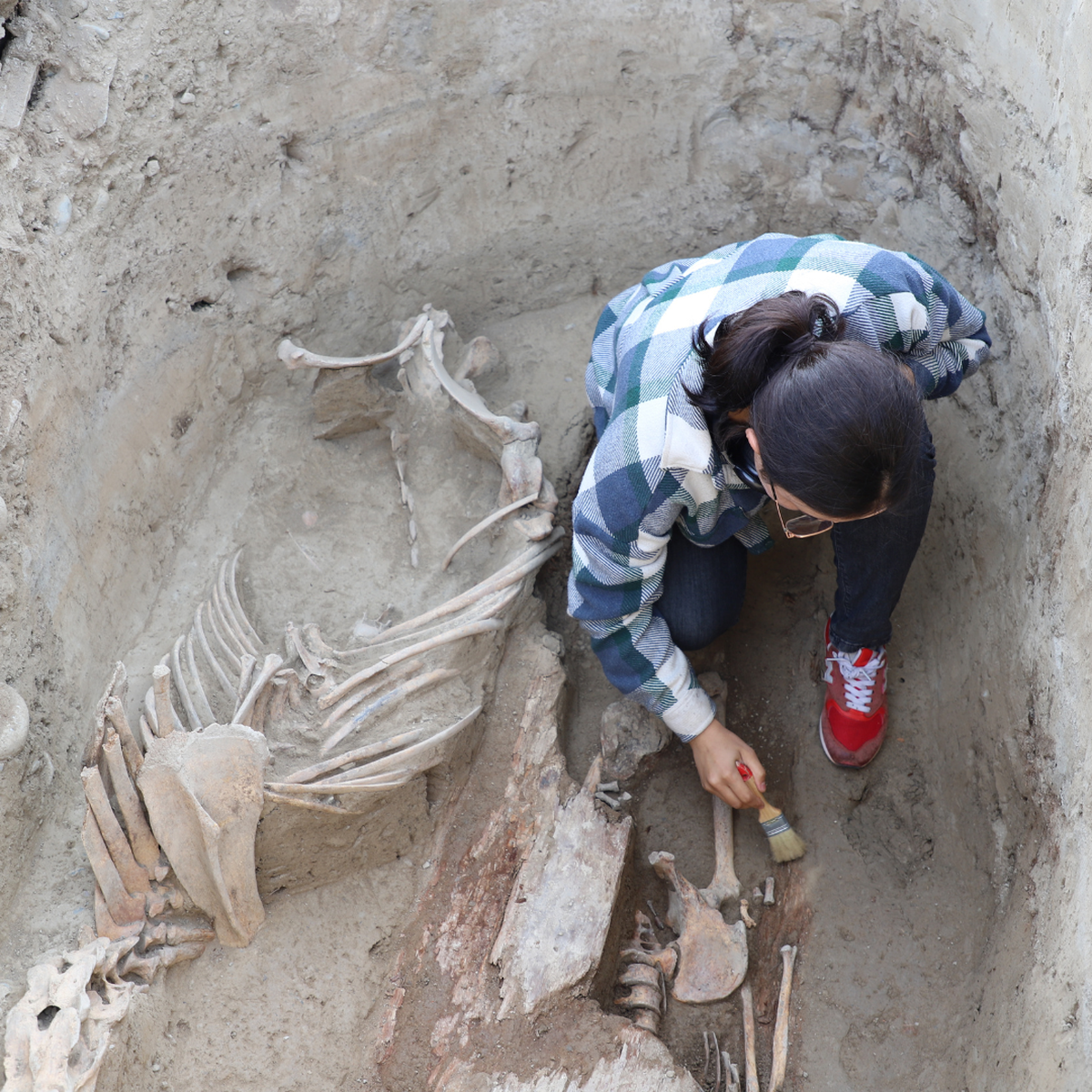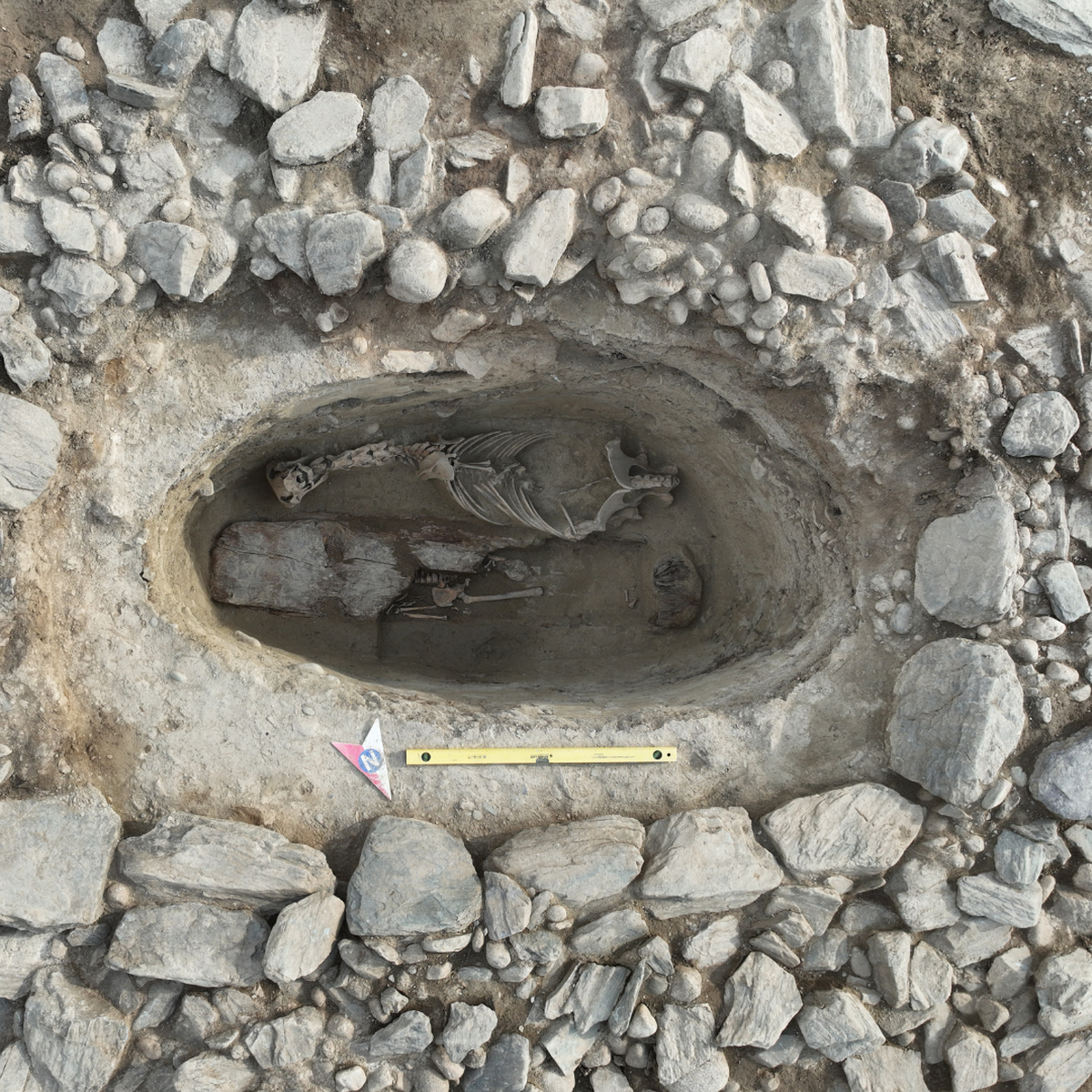New Xianbei Monuments from the Kazakh Altai
20 Aug 2024
In the 2024 field season, as part of the implementation of the PCF project KN MNVO RK "The Hunnic-Sarmatian Era in the History of Kazakhstan: Interdisciplinary Research, Analysis, and Reconstruction," under the leadership of VNS Aytkali A.K., archaeological excavations at the Tautekeli burial site, which dates back to the "Great Migration" era, continued.
The site is located in the Tautekeli area, 11 km from the village of Arshaty in the Katon-Karagay district of the East Kazakhstan region. During the fieldwork, 13 burial and commemorative complexes were studied in detail. Preliminary findings suggest that these complexes belong to the Xianbei tribal union and date to the first half of the 1st millennium AD.
The discovered above-ground structures consist of stone enclosures with burial pits in the center, which are mostly oriented in a latitudinal direction. In the shallow pits, approximately one meter deep, single burials of adults were found, and less frequently, children. In two cases, the burials were covered by horse carcasses. The grave goods included ceramic fragments, cowrie shells, and beads made of semi-precious stones.
According to written sources, the Xianbei played a key role in the formation and development of ethnocultural processes in Central Asia after the fall of the Hunnic Empire. Their influence was reflected in various aspects of the cultural and political development of the region's nomadic communities, including the formation of new state formations, the development of military traditions, and social and economic structures.





